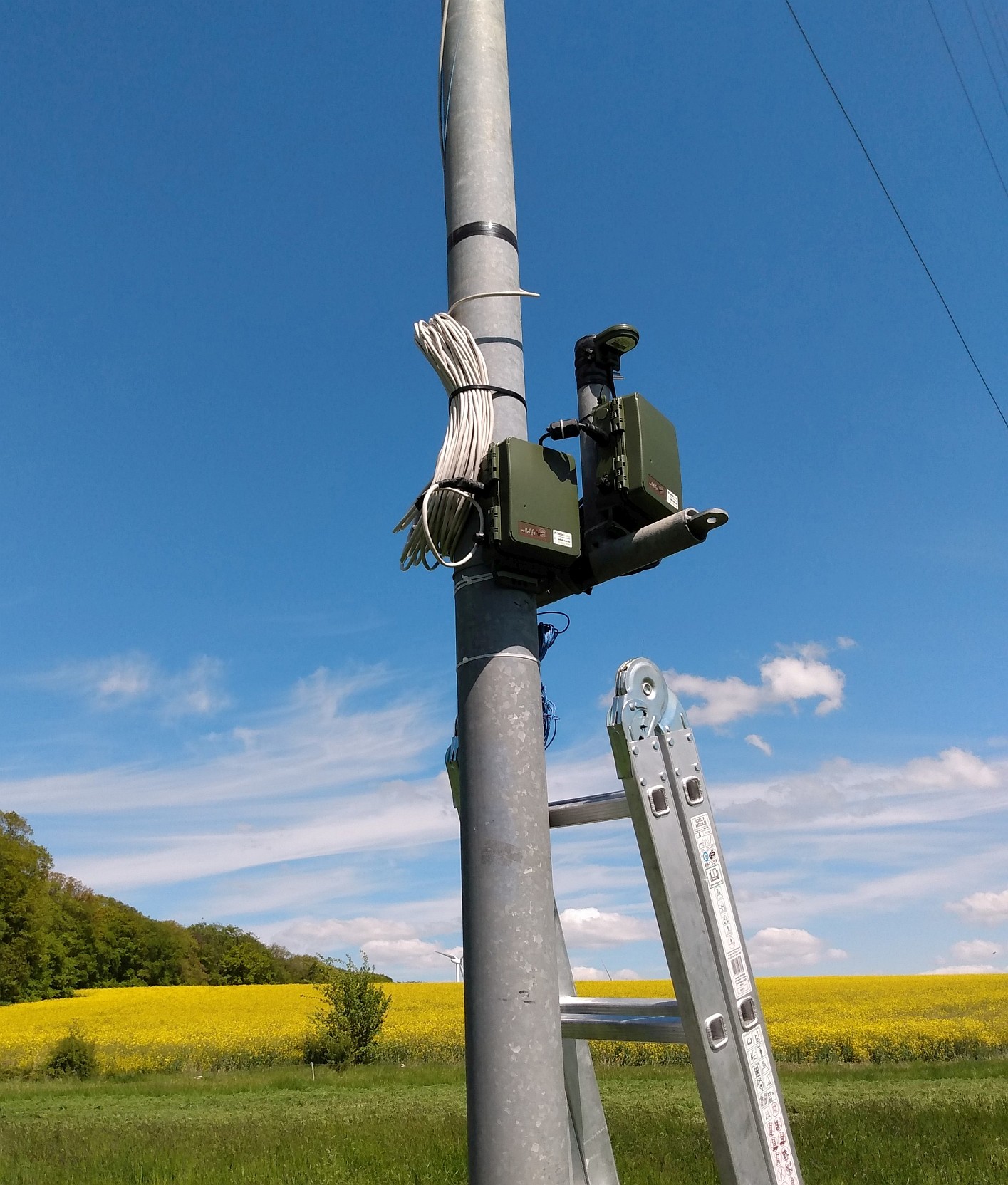Bat monitoring
Masts for bat observation
Numerous impact studies are mandatory when developing wind power projects. An important part of this is the continuous monitoring of bats at the planned site. Normally, this monitoring should cover the main activity period of the bats throughout the year. Therefore, continuous monitoring with automatic bat call recording systems is usually carried out from the beginning of March to the end of November of a year.
HRAFNKEL provides tubular masts as instrument carriers for the continuous observation of bats over several months. Usually, masts with a height of 40 to 50 metres are sufficient. Here we can refer to more than 20 years of experience in the field of wind measurements: Our tubular masts from our own design are calculated for quasi-permanent installation and certified in accordance with the EUROCODE 1 standard.

Lifts from Hrafnkel for observation systems
Depending on the requirements of the environmental experts, automatic systems for recording bat calls are mounted on the mast at two different heights. The systems are usually installed in such a way that recordings are made both close to the ground (3 to 10 metres) and at a height of 40 to 50 metres. From these simultaneous recordings, environmental experts can determine the activity of different bat species depending on the height.
The observation systems can be mounted in different ways: Either the entire system is mounted at the desired height. Or only the microphone is installed at this height and the recording system is mounted at a height of around 3 metres. The first solution is used, for example, to mount the batcorder system from ecoObs. We have already realised the latter solution several times with the systems from Wildlife Acoustics (SM2BAT, SM4BAT). The observation system or microphone is either permanently installed on the mast or optionally attached to a lift system developed by HRAFNKEL. The lift makes it possible to install and maintain the observation system on the ground, thus avoiding work at height.

Requirements for bat observation
Depending on the bat species, their flight activity is concentrated at certain altitudes. For example, bats of the genus Myotis mainly fly close to the ground or at low altitudes and close to terrain structures. They therefore usually fly below the area swept by the rotor of a wind turbine. This means that the risk of collision between bats of the genus Myotis and wind turbines is lower as long as the lower tip of the rotor blade does not fall below a height of 20 to 30 metres. In contrast, the collision risk of bats of the genus Nyctalus with wind turbines is higher, as they often fly at heights that are within the range of the area swept by the rotor.
 An important part of the environmental impact assessment of a wind power project is therefore the continuous monitoring of bat activity at different heights in order to analyse the collision risks of bats depending on the species and their respective flight altitude.
An important part of the environmental impact assessment of a wind power project is therefore the continuous monitoring of bat activity at different heights in order to analyse the collision risks of bats depending on the species and their respective flight altitude.
